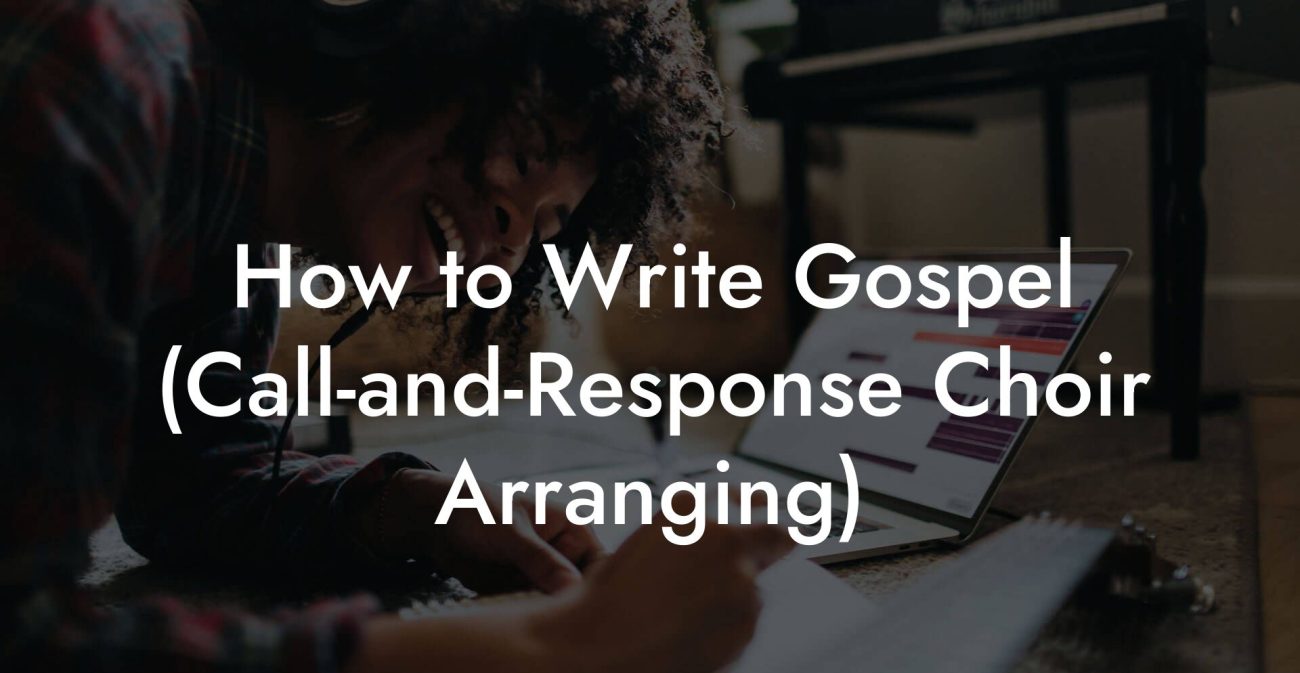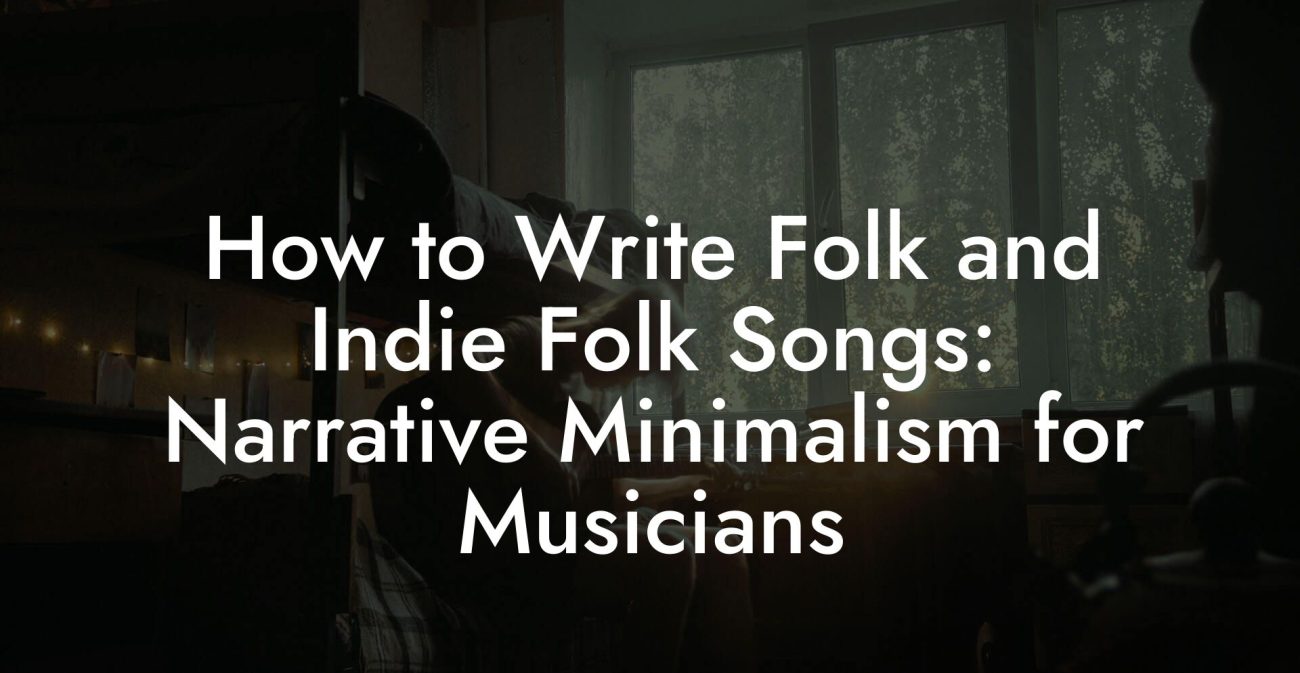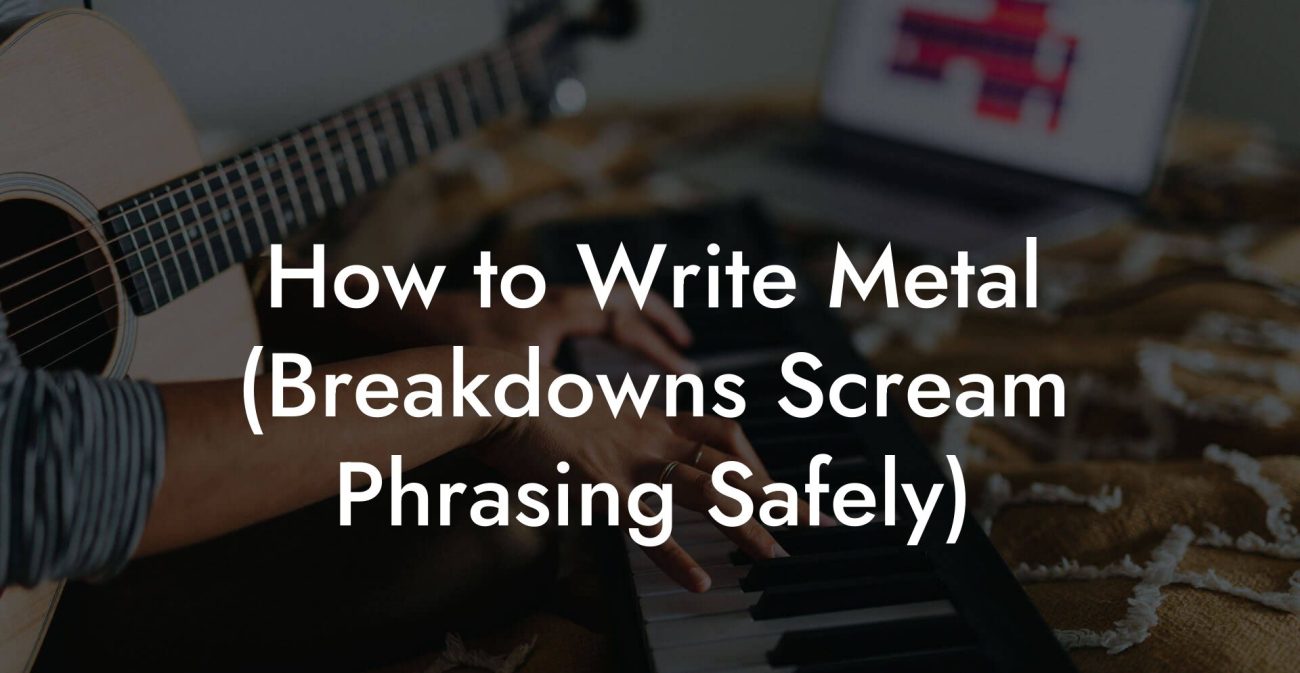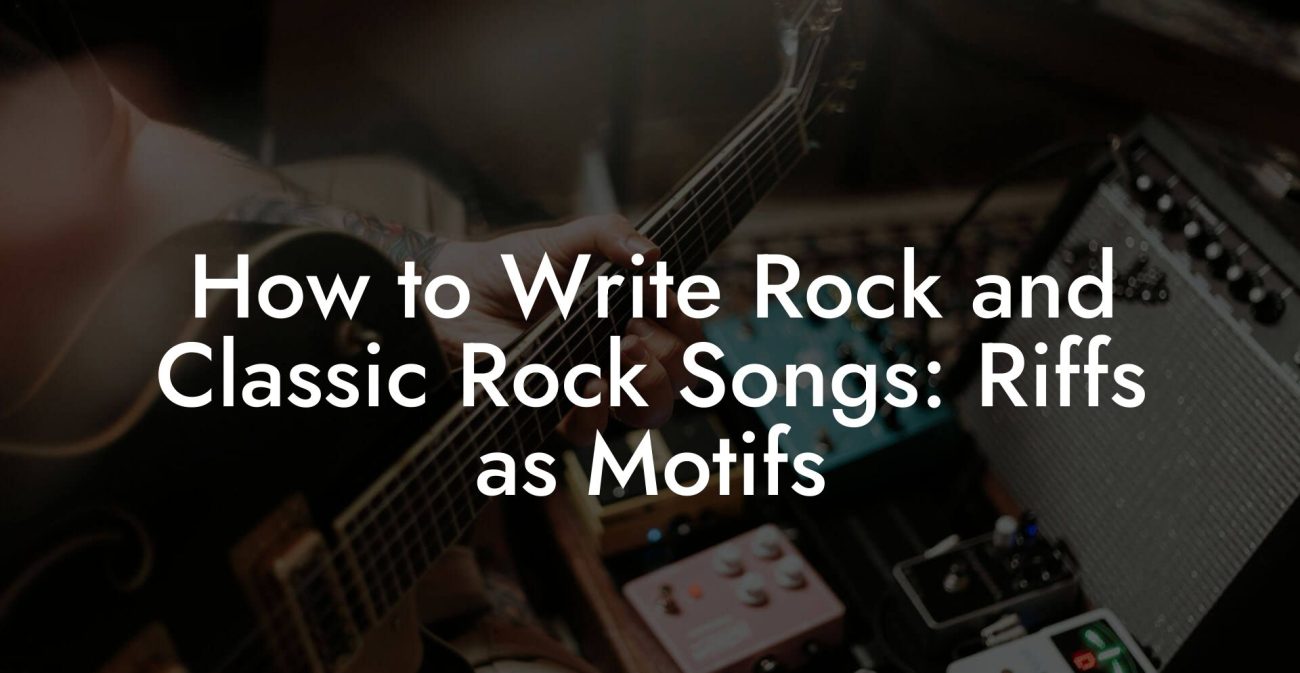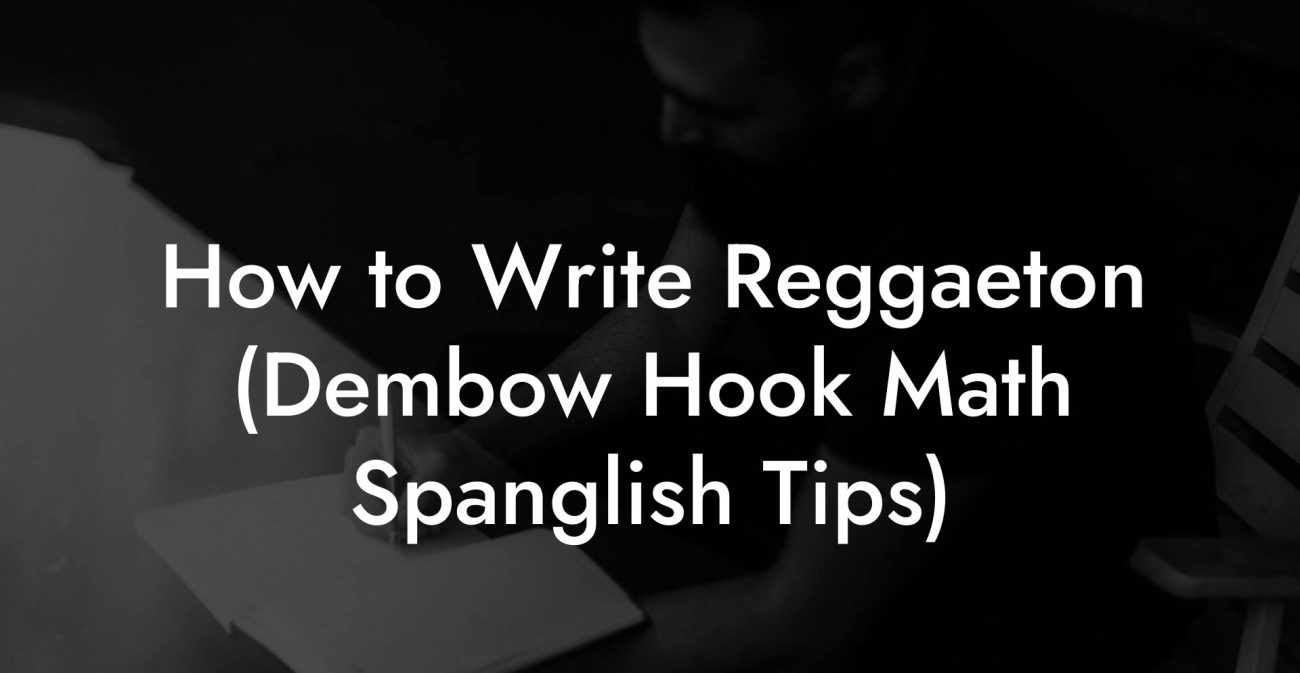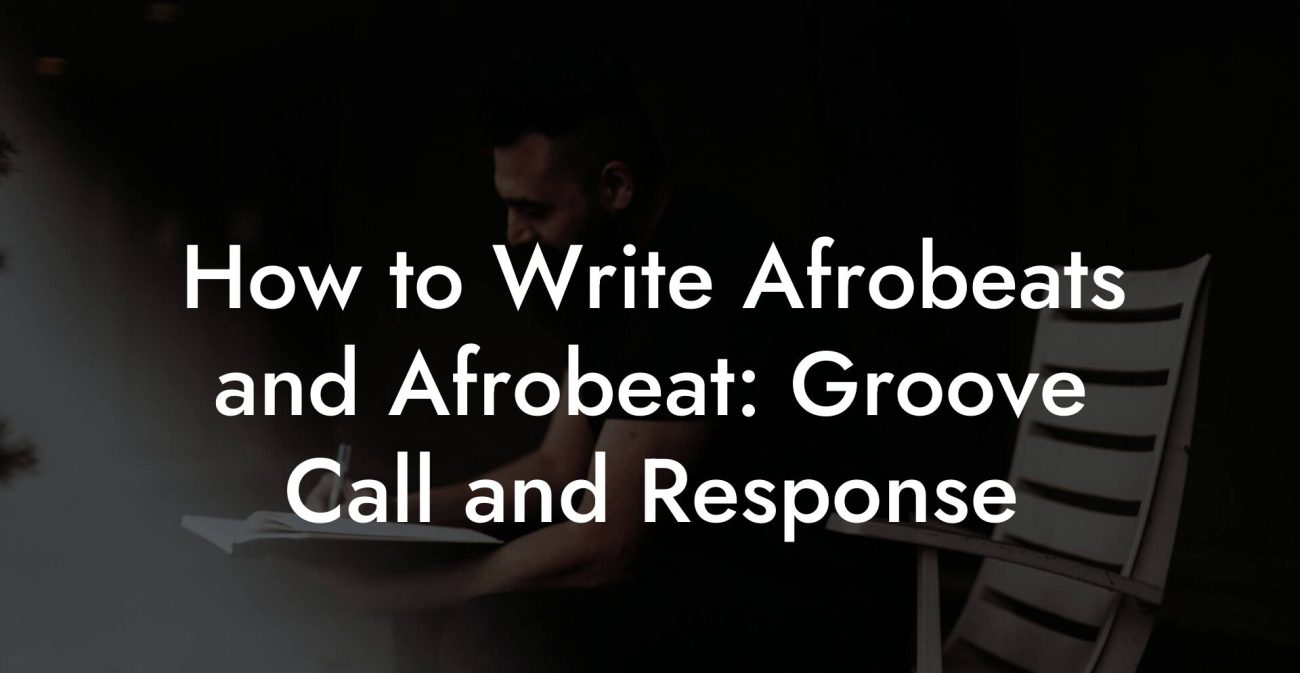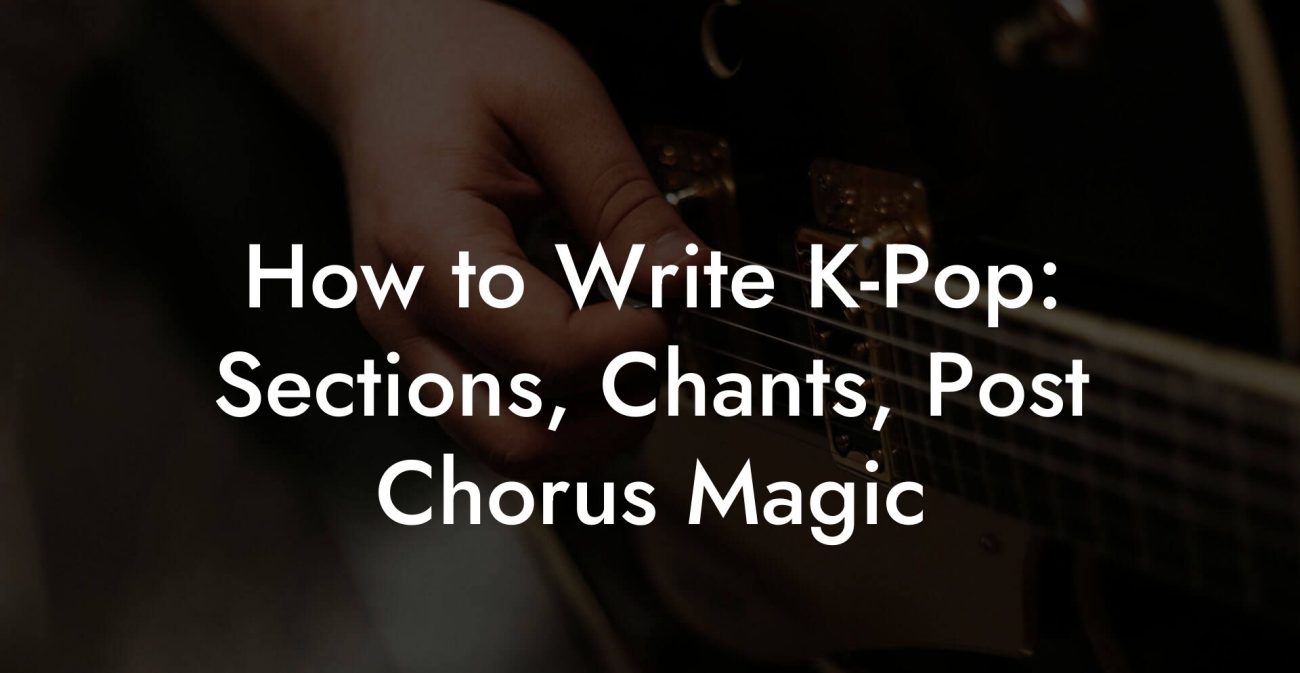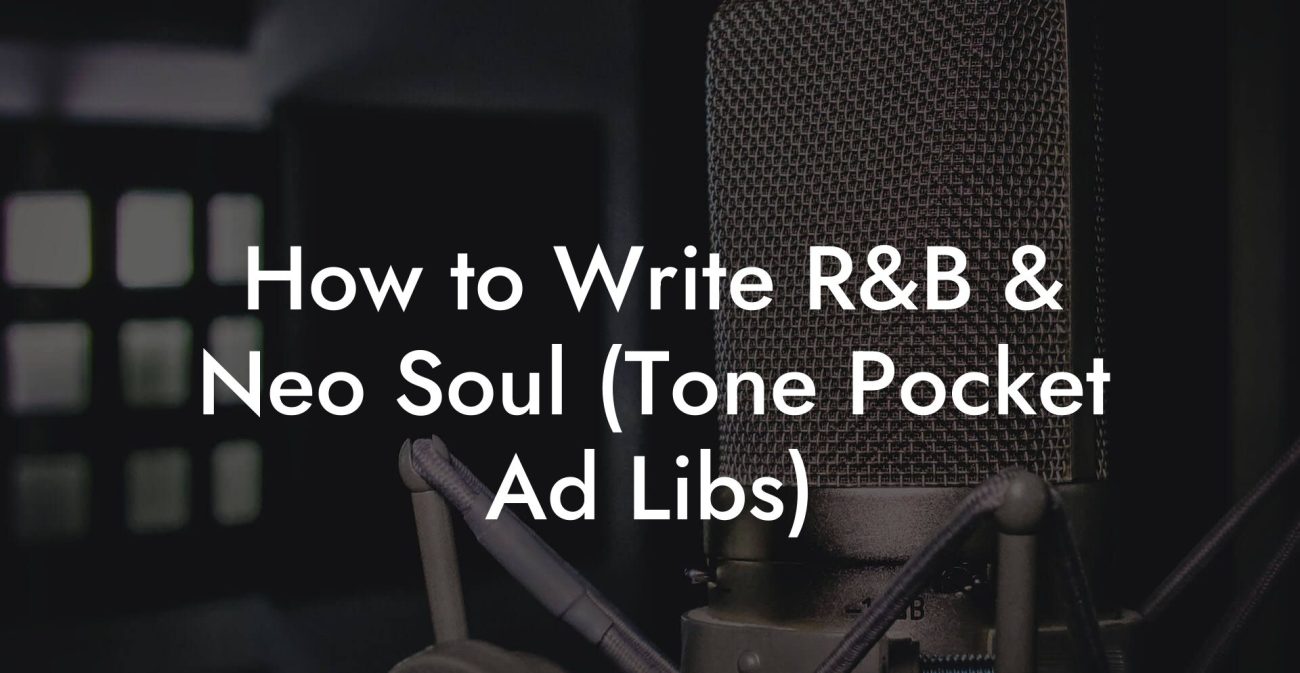Songwriting Advice
Genre Songwriting Library: Rules to Break on Purpose
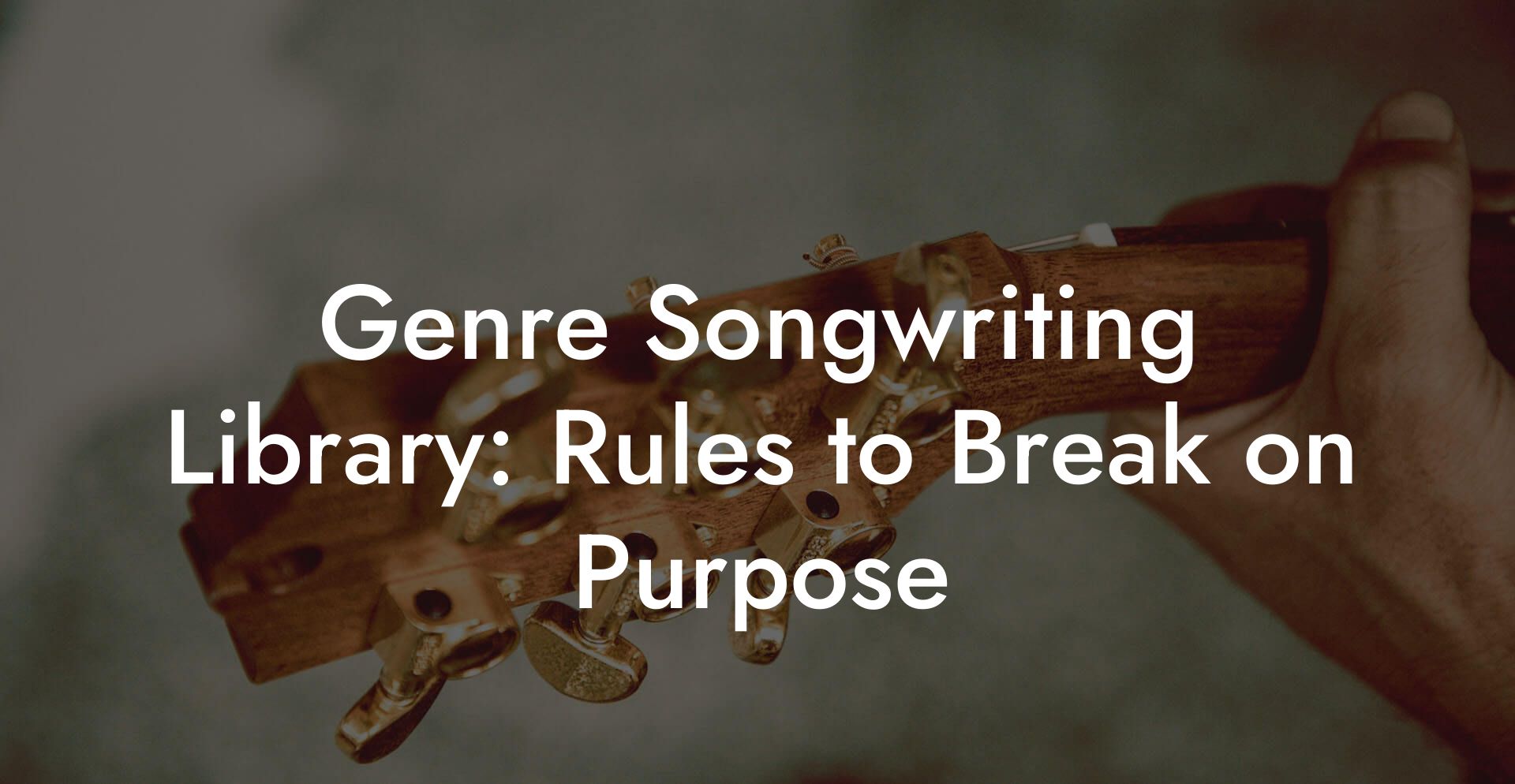
Yes you can break the rules. Do it with intent. This guide hands you a playbook for flipping genre expectations so your songs sound like you not a playlist template. We map the usual rules in popular genres, explain why those rules exist, then give you permission with tactics to break each one on purpose. You will get clear examples, real life scenarios, technical notes, and exercises that force messy creative breakthroughs. Read this if you want to stand out and still get playlist placements and club plays and tears in the shower.
Quick Interruption: Ever wondered how huge artists end up fighting for their own songs? The answer is in the fine print. Learn the lines that protect you. Own your masters. Keep royalties. Keep playing shows without moving back in with Mom. Find out more →
Quick Links to Useful Sections
- Why Break Genre Rules on Purpose
- How to Use This Library
- How to Test a Rule Break
- Pop
- Core rules
- Why these rules exist
- Rules you can break
- Production tips
- Micro exercises
- Rock
- Hip Hop
- R B
- Country
- EDM and Dance
- Indie and Alternative
- Jazz
- Metal
- Folk
- Reggae and Latin
- Rule Breaking Toolkit
- How to Explain Your Rule Break to a Producer
- Common Pitfalls and How to Fix Them
- Exercises to Make Rule Breaking Habit
- 21 Minute Genre Swap
- Two Element Swap
- Rule Break Swap Sheet
- How to Pitch a Rule Breaking Track to Playlists
- Checklist Before You Release a Rule Break
- FAQ
This is written for busy creators who need practical experiments and immediate results. Expect a few laughs, blunt honesty, and a few mild insults to your comfort zone. We will define every term and acronym so you never fake your way through a studio conversation. You will leave with a list of rule breaks to try this week and a checklist to test each idea before you play it for strangers.
Why Break Genre Rules on Purpose
Rules exist because they work. Genres have patterns that help listeners identify and attach to songs fast. But following every pattern is the fastest way to sound generic. Breaking rules with intention is how you get attention. It says I know the grammar and I choose an accent.
Real life scenario: You are in a writer room that wants a country chorus with modern production. Everyone starts dropping typical lyrics about trucks and small towns. You do not hate trucks but you also do not want to sound like a truck ad. You break the rule by keeping the chord shapes and cadence of country but swapping in a detail about your grandmother s living room. The chorus sticks because the emotional truth is specific and unexpected.
Breaking rules on purpose is not chaos. It is controlled risk. You keep the parts that carry identity and mutate the parts that get people stuck in the same playlist they heard last week.
How to Use This Library
Skim to your genre then read the whole thing like a cheat sheet. Each genre entry follows the same format.
- Core rules that define the genre.
- Why they exist so you sound intentional when you break them.
- Rules you can break with specific methods and examples.
- Production and lyric tips to make the break land hard rather than feel flabby.
- Micro exercises to internalize the break in a single session.
Terms and acronyms explained inline. Example: BPM means beats per minute. It tells you tempo. DAW means digital audio workstation. That is your recording software like Ableton Live, Logic Pro, or FL Studio. VST means virtual studio technology, a plugin used to make sounds and effects. MIDI is Musical Instrument Digital Interface. That is the language that tells synths and instruments what notes to play. EQ means equalizer. It shapes tone by boosting or cutting frequencies. Compression evens out dynamic range so quiet parts get louder and loud parts sit with the rest of the mix.
How to Test a Rule Break
Breaking rules is a science not a gamble. Use this checklist for every experiment.
- Identify the rule and its musical anchor. Is it a tempo, an instrument, a lyrical topic, or a structure?
- Decide which element will hold identity and which will shift. Keep at least one anchor so listeners still recognize the genre.
- Apply the break in a short demo under two minutes. Record quickly on your phone if needed.
- Play for three people who do not know the song. Ask one question. Which moment surprised you? If they cannot point to the break, you did not signal it enough.
- Tighten the surprise. Add a small production touch that highlights the change such as a vocal reverse, a one beat silence, or a register jump.
Pop
Core rules
- Strong chorus with repeated title
- Simple chord progression and short lines
- High vocal presence and bright production
- Tempo that favors dance or radio friendly pacing usually between 90 and 130 BPM
Why these rules exist
Pop is about immediate identity and replay value. The chorus needs to hit fast so the listener sings back. Simple chords let the melody do heavy lifting. Bright production cuts through playlists and speakers.
Rules you can break
Break the chorus must be sung loud rule. Make the chorus whispered or talk sung and let the post chorus act as the earworm. Example: write a chorus that is intimate and low volume then follow with a syllabic chant that people hum in the shower. The contrast makes both parts stronger.
Break the need for repeated title. Use a chorus that is more of a story and place the title only in a surprising bridge line. The song still lands if you give the title a strong melodic or production anchor when it appears. Real life move: think of the title like a cameo. It should show up and be memorable even when rare.
Break faster tempo expectations. Try a pop ballad at 70 BPM with modern drum programming. Keep rhythmic interest with syncopated hi hat and vocal melody that moves against the beat. The slower tempo highlights lyric detail and creates space for emotive production touches.
Production tips
- Use a small signature sound like a vocal breath or a toy piano to mark the chorus when you avoid a big chorus wall.
- Use subtle sidechain compression so low level components breathe with the kick without turning the chorus into EDM territory.
- If the chorus is soft, automate a small reverb swell to make it feel bigger without adding loud elements.
Micro exercises
- Write a chorus with no repeated words. Record it spoken and sung. Add a one line post chorus that repeats twice. Test the singability.
- Take a fast pop beat and rework it at 70 BPM. Keep the hi hat groove and rewrite the melody to fill spaces.
Rock
Core rules
- Guitar centric arrangements
- Strong pre chorus to chorus dynamics
- Power chords and simple harmonic motion
- Live energy and performance oriented vocals
Why these rules exist
Rock grew from live band tradition. The instruments and arrangement must translate to stage and garage practice. Power and clarity keep the song moving in a live context.
Rules you can break
Break the guitar must lead rule. Make synth textures or processed piano the melodic lead while guitars are ambient pads. The song still reads as rock if drums and bass keep pocket and if guitars maintain timbral grit under the synth.
Break the verse loud chorus louder formula. Create a reverse dynamic structure where the chorus is minimal and the verse is the releasing section. The trick is to craft the chorus melody as an anchor that gets replayed and the verse as the movement that actually hits emotionally. Real life example: a band that plays festivals wants a singalong hook. You give them a quiet chorus that fans shout from memory because the verses are anthemic and easy to recall.
Production tips
- Use amp simulation or clever reamping to keep guitars present but not dominant.
- Add room mics and low level crowd ambience for a live texture when you break the loud chorus rule.
- If synth leads the melody, use filters and slight distortion to connect it to rock timbre.
Micro exercises
- Write four bar verses that resolve into a two bar minimal chorus. Play it live with one guitar and a synth. See which part the crowd sings back.
- Take a classic power chord progression and swap the top note for a synth lead. Keep the rhythm section identical.
Hip Hop
Core rules
- Spoken or rhythmic vocals that prioritize flow
- Beat focus with looped samples or programmed drums
- Bars structured in 16 measure sections and strong hook on chorus
Why these rules exist
Hip hop is rhythm first. The beat is the canvas for rap and the hook anchors repeat listens. Structure supports breath patterns and punchlines.
Rules you can break
Break the strict 16 bar verse rule. Try eight bar verses or irregular bar counts like 14 or 18. Rappers can still land punchlines if the breath spots are clear. Irregular lengths create surprise and sonic interest when the chorus hits. Real life scenario: you are writing a feature for a pop singer and a rapper who likes fast inserts. Use a 12 bar verse to let the feature shine and then let the rapper stretch into a dynamic final six bars that act like a mini solo.
Break the sample only beat rule. Build beats from live instruments or orchestral stabs. Use scratches only as texture not foundation. Breaking this rule gives the track a cinematic feel while keeping the pocket intact.
Production tips
- When you alter bar count, use a clear percussion fill or vocal tag to signal the transition.
- If you use live instruments, double key rhythmic motifs with a programmed hi hat to preserve the hip hop swing.
- Remember sample clearance. If you want to use a recognizable sample but cannot clear it, recreate the idea with session players or synths in the same key and feel.
Micro exercises
- Write a 14 bar verse and map breath spots. Rap it at tempo and mark where you need to pull back. Adjust content to fit breath not bar count.
- Make a beat with only one sampled element and everything else live. Keep the pocket tight.
R B
Core rules
- Soulful vocal delivery with melisma and emotion
- Smooth chord progressions that support voice
- Production that balances warmth and clarity
Why these rules exist
R B is intimacy and voice. The production exists to serve the singer and to create closeness for the listener.
Rules you can break
Break the glide to the chorus rule. Keep the verse and chorus in the same register and use lyrical content to create lift. If the chorus does not need range change to feel big then craft the lyrics to perform the emotional lift. Use a lyric twist or change in perspective instead of a register jump. Real life example: a songwriter avoids belting by altering pronouns and using a reveal in the chorus line that makes it land emotionally.
Break melisma expectations. Use straight rhythm and a conversational delivery for modern R B. Prosody matters. Clear single syllable notes can hit harder than runs when emotion is in the words.
Production tips
- Use tape saturation or analog emulation for warmth.
- If you avoid runs, double the vocal for intimacy rather than big chorus choruses.
- Use sparse arrangement and an intimate room mic sound to keep the vocal front and center.
Micro exercises
- Write a chorus that does not rise in pitch but changes the lyric perspective. Sing it with single note delivery and test emotional impact.
- Record a verse with no melisma and one with melisma. Compare which one sells the story better.
Country
Core rules
- Story driven lyrics with concrete everyday details
- Simple diatonic harmony and strong vocal clarity
- Traditional instruments like acoustic guitar, pedal steel, and fiddle
Why these rules exist
Country is narrative. Listeners rely on detail and cadence to feel like they are being told a story. The instrumentation creates a specific cultural setting.
Rules you can break
Break the small town lyric rule. Use urban imagery with country cadences. The song still reads as country if it keeps storytelling cadence and common country chord movement. Real life scenario: a songwriter grew up in a city but loves country music. They write about rooftop gardens and subway delays using a country melodic shape. It feels fresh because the emotional geometry of country is intact but the detail is new.
Break the instrumentation rule by adding electronic textures. Keep the acoustic guitar as a rhythmic anchor while layering synth pads and sidechain bass. The arrangement can sit in both worlds when the vocal delivery keeps the genre cadence.
Production tips
- Use traditional instruments as anchor layers. Let modern sounds be textural above them.
- Blend pedal steel in a higher register so it supports rather than leads when you add synths.
Micro exercises
- Write a country verse about city life. Keep a story arc and a sensory detail in each line.
- Produce a demo with acoustic rhythm guitar and a synth pad. Balance so the guitar remains clear.
EDM and Dance
Core rules
- Build and drop structure with tension and release
- Tempo typically between 120 and 140 BPM
- Hook often instrumental or vocal chop
Why these rules exist
EDM is functional. DJs need predictable structures for mixing and dancers need steady BPM. Tension and release give physical payoff.
Rules you can break
Break the drop must be loud rule. Use a harmonic chorus without a massive low end drop. Build the arrangement so the energy comes from melodic payoffs rather than low frequency impact. This works in intimate clubs and streaming playlists where fat lows can sound muddy. Real life example: a producer plays a festival set and wants a moment of emotional clarity. They use a chord change instead of a bass drop. The crowd sings along.
Break predictable four on the floor kick placement. Use polyrhythms and off grid percussion to create momentum without losing dance ability. Keep the kick pattern simple in one layer and let percussion carry the groove variations.
Production tips
- When you avoid a big low end drop, automate harmonic saturation and mid range presence to create perceived loudness.
- Use transient shaping to keep percussive elements punchy without adding more low frequency energy.
Micro exercises
- Make a 90 second track with no drop low end. Use chord changes and vocal hooks as energy points.
- Create a percussion loop that is off grid but has a steady kick in one layer. Layer humanized hi hat patterns on top.
Indie and Alternative
Core rules
- Lo fi aesthetics and DIY production values
- Unconventional song forms and quirky lyrics
- Use of texture and atmosphere over polish
Why these rules exist
Indie became identity driven by unpolished authenticity. Texture and surprise matter more than glossy production.
Rules you can break
Break the lo fi equals authenticity assumption. Produce an indie song with high fidelity and pristine vocals. The contrast of high polish with quirky lyrical content creates a compelling tension and widens your audience. Real life example: a songwriter records a fragile melody with a studio level vocal and it hits on playlists because it sounds like an expensive secret.
Break the unconventional form rule by writing an indie song with strict pop form. Keep the lyrical oddity and textures but embrace a hook heavy structure. This is a great bridge to radio while keeping indie credibility.
Production tips
- If you make high fidelity indie, keep subtle room and analog flavors to preserve warmth.
- Balance quirky instrumentation with solid rhythmic anchors so the song still grooves.
Micro exercises
- Take a lo fi demo and remake it in a studio with clean vocals. Notice what changes emotionally.
- Write an indie lyric in verse chorus verse structure that repeats a memorable line in the chorus.
Jazz
Core rules
- Complex harmony and improvisation
- Fluid time signatures and loose arrangements
- Instrumental virtuosity
Why these rules exist
Jazz evolved from a conversation between musicians. Complexity and openness create space for improvisation and personal expression.
Rules you can break
Break the technical virtuosity expectation. Write jazz with accessible hooks and simple solos. Keep jazz harmonies but trim the runs. This invites listeners who are not jazz nerds into the music. Real life scenario: a vocalist who loves jazz writes a pop friendly melody over extended chords. The song becomes a crossover because it respects jazz color yet prioritizes singability.
Break the improvisation first rule. Arrange a composed head that is memorable and keep improvisation minimal or absent. Some of the best modern jazz influenced songs are more composed than improvised and still feel like jazz because of harmony and tone.
Production tips
- Use warm mic techniques and keep dynamics natural.
- Use small amounts of reverb and keep editing minimal to preserve human feel.
Micro exercises
- Write a 32 bar form with a catchy head that repeats. Keep one short solo of eight bars that tells a story not technical showing off.
- Arrange a pop lyric over a ii V I progression and sing with jazz phrasing.
Metal
Core rules
- Heavy distorted guitars and aggressive vocals
- Fast tempos and technical riffs
- Intense dynamics and cathartic releases
Why these rules exist
Metal is catharsis. The intensity connects to strong emotions and community identity. Technicality shows mastery and commitment.
Rules you can break
Break the need for maximum distortion. Use clean guitar tones in key sections and distort only for accents. The contrast makes heavy parts heavier and creates tension. Real life example: a metal band adds a clean arpeggiated section with a solitary vocal line. When distortion returns the impact is much larger.
Break the constant aggressive vocal rule. Use whispered or spoken passages to build menace. Clean singing in choruses can create anthemic moments that broaden the song appeal.
Production tips
- When you mix clean sections, carve out frequency space so distorted guitars do not mask them on return.
- Use dynamic automation to preserve transient attack on drums when switching textures.
Micro exercises
- Write a riff that works both distorted and clean. Arrange a song that alternates these textures.
- Try a chorus with clean singing and heavy verses. Test crowd reaction live.
Folk
Core rules
- Acoustic instrumentation and narrative lyrics
- Simple chord progressions and close vocal harmonies
- Intimate production that feels like a living room performance
Why these rules exist
Folk is about story and community. Simple arrangements let words be heard and shared.
Rules you can break
Break the acoustic only requirement. Add subtle electronic textures or ambient synths behind an acoustic song. Keep the storytelling intact. The modern contrast can elevate the lyric without losing folk roots.
Break the linear narrative expectation. Write fragments and rely on imagery and associative lines to create meaning. Folk listeners still connect if the imagery is specific and honest.
Production tips
- Keep vocals forward. Use stereo ambiences on background textures so they do not mask words.
- If adding electronic elements, keep them low in the mix and anchored to tempo with sidechain.
Micro exercises
- Write a folk chorus that repeats a single concrete image. Add ambient synth bed on the demo and compare.
- Make a demo with fragments instead of a linear story. See how listeners create meaning.
Reggae and Latin
Core rules
- Distinct rhythmic patterns that define groove
- Use of percussion and syncopation
- Genre specific instrumentation like horns and congas
Why these rules exist
These genres are deeply tied to dance and cultural context. Rhythms are identity markers that carry cultural meaning.
Rules you can break
Break instrumentation rules by swapping in unexpected sounds like electric guitar with delay or synth accordion. Keep rhythmic feel intact so the cultural groove remains readable. Real life example: a songwriter fuses cumbia rhythm with synth bass and the track thrives because dancers feel the rhythm while the modern production gives it fresh identity.
Break language expectations. Write verses in English with choruses in Spanish or Portuguese or vice versa. Code switching can increase accessibility while honoring roots.
Production tips
- Respect the pocket. When you add new instruments, they must lock with percussion and bass.
- Use percussion fills as transition markers when you alter instrumentation.
Micro exercises
- Write a chorus in a different language and a verse in your native language. Keep the rhythm authentic.
- Take a classic rhythmic pattern and layer an unexpected lead sound over it. Test on a dance floor if possible.
Rule Breaking Toolkit
These are practical techniques you can use across genres to make a rule break land.
- Contrast anchor Keep one strong element that preserves the genre identity. That might be tempo, a percussive pattern, or a lyrical cadence.
- Production cue Use a production element to highlight a break. A vocal reverse, a one beat silence, or a sudden reverb swell signals listeners to pay attention.
- Register flip Place the same melody in a different vocal register. The melody stays familiar but the emotional color changes dramatically.
- Tempo modulation Slow the feel using half time or speed it up using double time instead of changing BPM. That maintains groove while altering perception.
- Metric surprise Use an irregular bar count or insert a single extra beat to break expectation. Signal it with a percussion tag.
- Lyric misdirect Set up a cliché but finish with a specific image that reframes meaning. Misdirection keeps listeners engaged.
How to Explain Your Rule Break to a Producer
Producers like clarity. Say I want to keep the genre pocket but remove the chorus wall and replace it with an intimate hook. If you explain what anchor you are keeping and what you are changing they can craft the mix to support the idea. Use jargon sparingly and define terms if the person is not technical.
Example line you can use in a session: I want the groove of an indie track but the chorus to be soft. Keep the kick and bass the same and pull down the midrange on guitars when the chorus hits. Add a vocal delay to make the chorus feel wide without loud instruments.
Common Pitfalls and How to Fix Them
- You remove identity Fix by keeping at least one anchor that signals genre. Without it listeners might not stay long enough to appreciate the break.
- The break feels like a mistake Fix by designing production cues that intentionally mark the shift such as a reverse cymbal or vocal tag.
- The song loses energy Fix by planning energy arcs. If you soften a chorus, compensate with lyrical payoff or a new melodic hook that listeners can hum.
- You confuse your audience Fix by testing live or with friends and asking one clear question. Which part felt like a key moment. If answers differ wildly you might need a stronger signal.
Exercises to Make Rule Breaking Habit
21 Minute Genre Swap
- Choose a song in your chosen genre and set a timer for 21 minutes.
- Identify one core rule to keep and one to break.
- Make a two minute demo that implements the break.
- Send it to one friend and get one sentence of feedback.
Two Element Swap
- Pick two elements in a song: instrument and lyric theme.
- Swap the instrument with one from another genre and change the lyric theme to match the swap.
- Record a short demo and note what felt natural and what did not.
Rule Break Swap Sheet
Print or copy a small sheet. On the left list typical rules for your genre. On the right write five alternative choices. Make one demo per day for a week.
How to Pitch a Rule Breaking Track to Playlists
Playlists like clear hooks and moods. When you pitch a track that breaks rules, make the hook and mood obvious. In the pitch explain the anchor. Say this is a mid tempo country pop track with authentic acoustic feel and a minimal whisper chorus that becomes a singalong through the post chorus chant. Curators want to know why listeners will find your track familiar enough to add but unique enough to stand out.
Checklist Before You Release a Rule Break
- Does the song keep at least one clear genre anchor?
- Is the break signaled by a production or lyrical cue?
- Can a listener hum or remember a moment from the song after a single play?
- Have you tested the idea on at least three strangers or peers?
- Is the title and cover art giving the listener a correct hint about mood and genre?
FAQ
Will breaking genre rules hurt my chances to get playlisted
No. Breaking rules thoughtfully can help playlists if the track keeps a clear mood and a memorable hook. Curators seek tracks that surprise but still fit a playlist mood. Use your pitch to explain how the song will sit with a curated audience.
What does BPM mean and why does it matter when I break tempo rules
BPM means beats per minute. It is the tempo of the song. Changing BPM shifts energy and danceability. You can break perceived tempo rules by using half time or double time feels which keep the same BPM but change how the beat is felt. That lets you experiment without throwing off dancers or playlists that expect a tempo range.
Is it rude to borrow elements from another genre
No borrowing is musical conversation. Be respectful and acknowledge influences. If you sample a specific recording you may need clearance. If you use stylistic elements avoid caricature. Authenticity matters more than imitation.
What is prosody and why is it important when I change melodic or lyrical rules
Prosody is the relationship between words and music. It is how natural stress in speech lines up with musical beats and melody. When you break melodic or lyrical expectations check prosody. If natural word stress lands on weak beats the line will feel awkward. Fix by moving words or changing rhythm so speech stress meets strong musical stress.
How do I make a rule break sound intentional in the mix
Use production cues. Automate volume and effect changes, add a transient fill before the break, or use a vocal tag to mark the moment. The mix confirms a creative choice. If the mix treats the break as a mistake listeners will sense it and your credibility drops.
Can I break rules in a co write without offending co writers
Yes. Present the rule break as an experiment. Do a quick demo and ask if they want to try it. Creative people like permission. Keep the demo short and be open to iterating. If it works great. If it does not, keep what was good and move on.
What is the simplest rule to break for immediate effect
Swap instrumentation or texture while keeping the rhythm. A synth in place of a guitar or an acoustic instrument over a beat can alter perception immediately. It is low cost and high impact.
How do I avoid sounding like a gimmick when I break rules
Anchor emotion in specific lyric or performance. Gimmicks feel shallow. If your rule break highlights a true emotional idea it will feel earned not tricksy.
Should I document rule breaks in the song credits
No need to list creative choices in credits. Credits are for contributors and songwriting splits. If you used a sample or a replay of an identifiable part give credit or seek clearance. Otherwise let the song speak for itself.
How do I measure whether a rule break is successful
Measure listener memory and sharing behavior. Ask listeners what they remember from the first play. If they mention the break or the emotional moment you engineered you have succeeded. For streaming data look at skip rate and completion rate. A successful break will reduce skips and increase completions over similar tracks.




